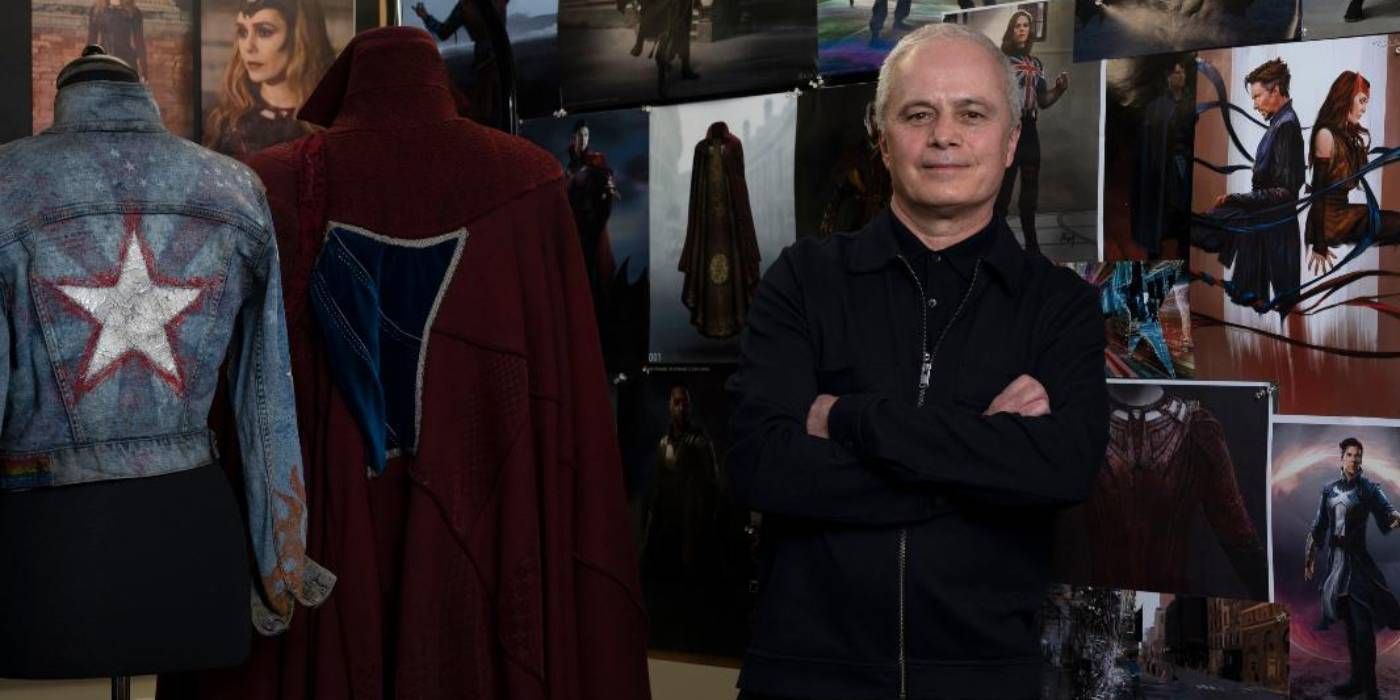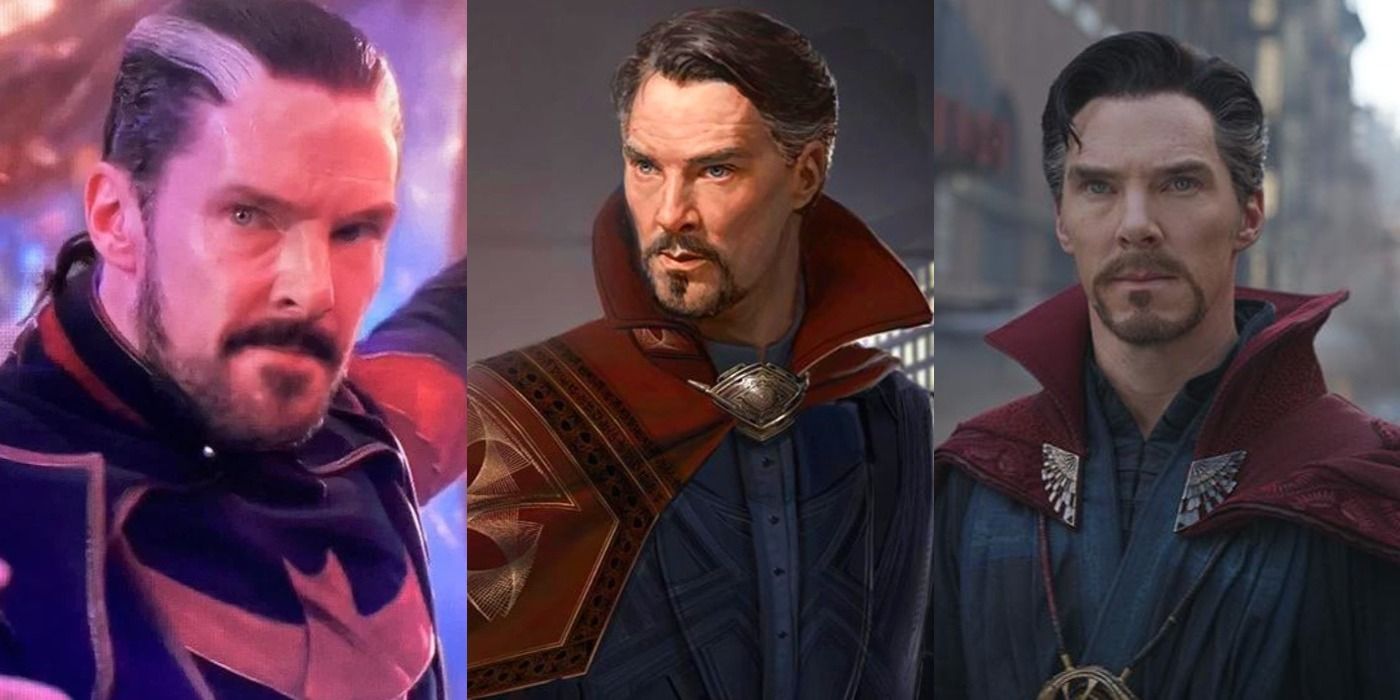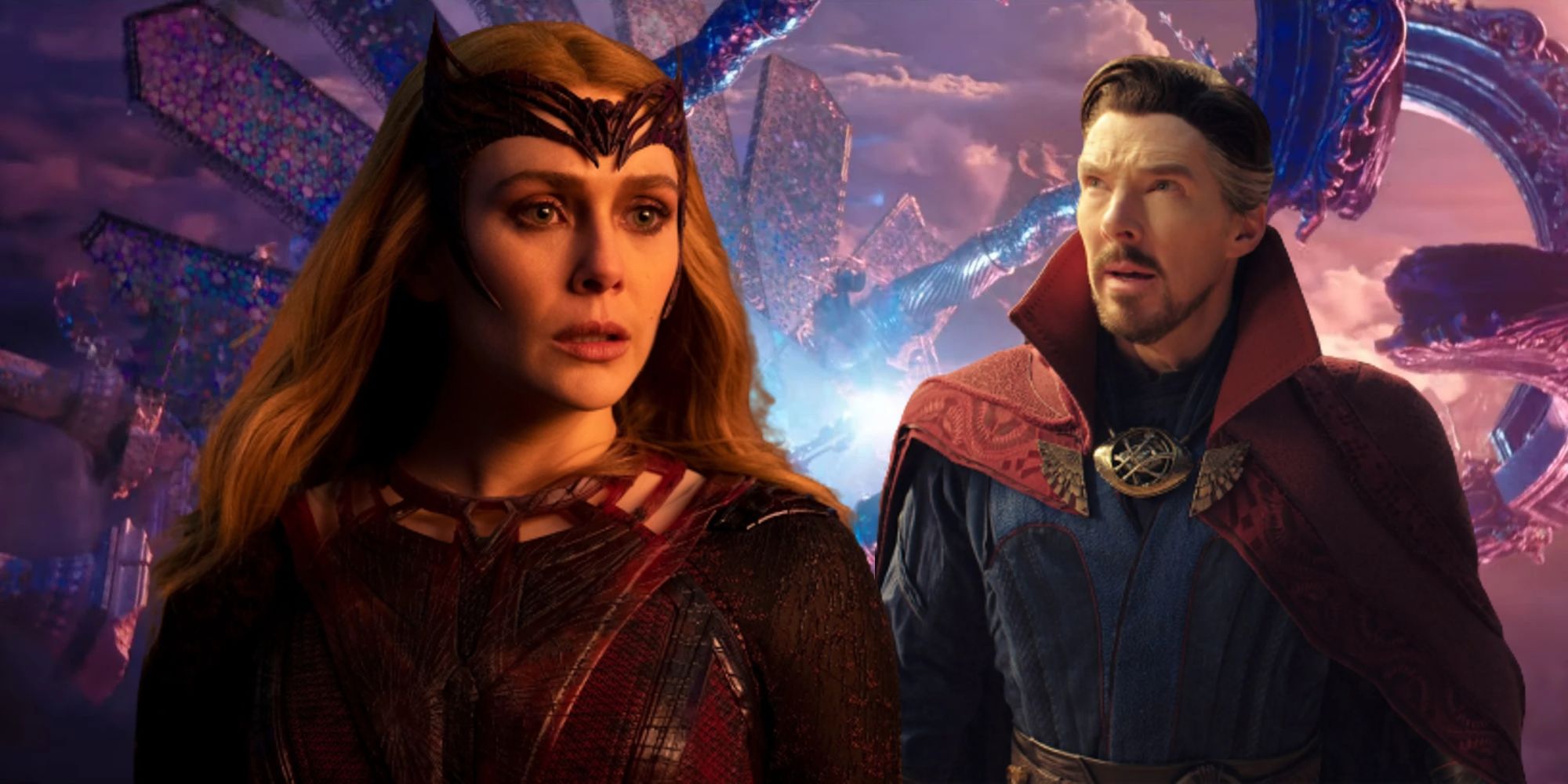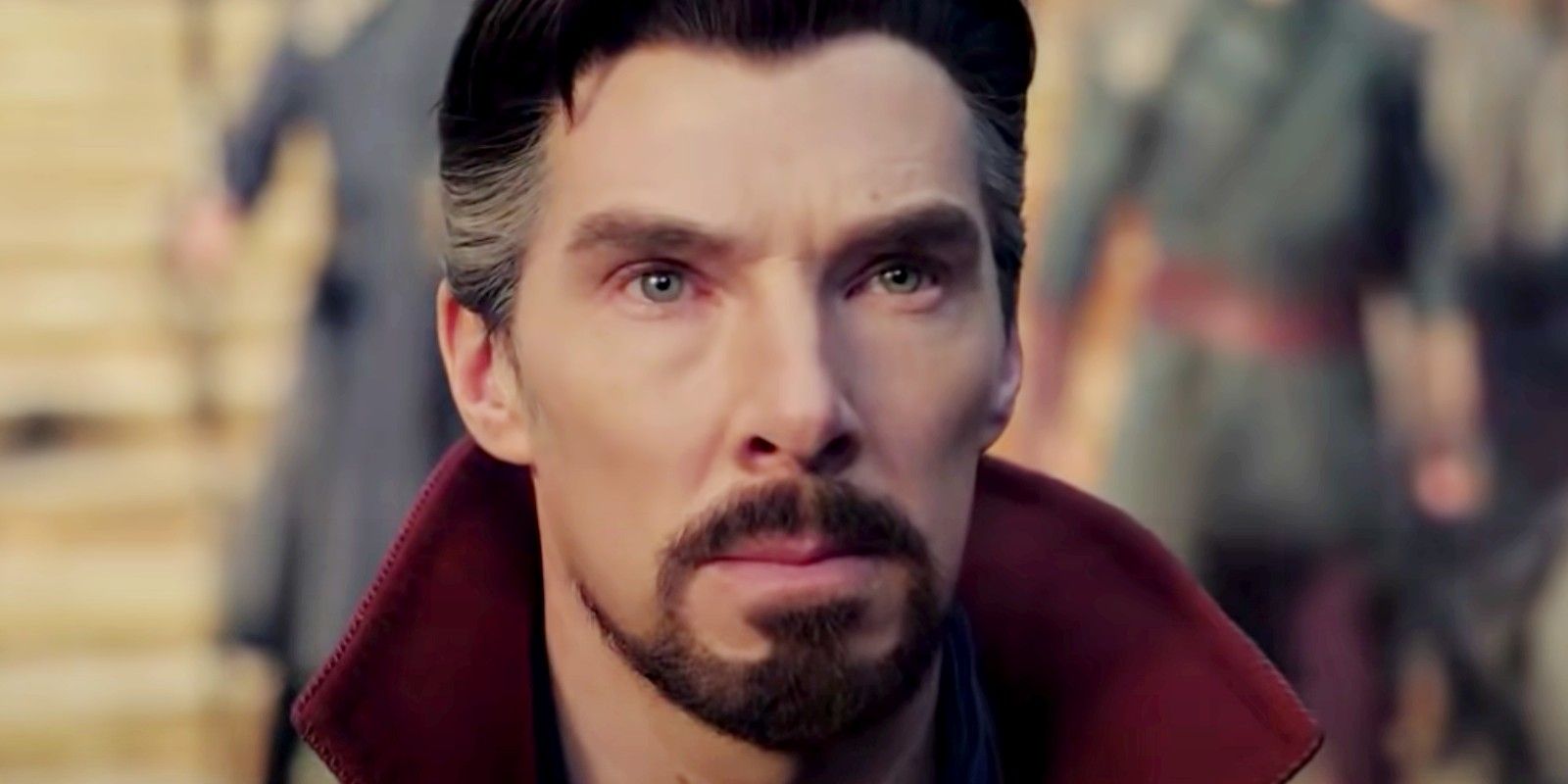
Doctor Strange in the Multiverse of Madness hit theaters on May 6, marking the return of the the movie's titular sorcerer, with Benedict Cumberbatch reprising the role. With many other sorcerers along with characters - like America Chavez (Xochitl Gomez) and Wanda Maximoff a.k.a. Scarlet Witch (Elizabeth Olsen) - also appearing in the movie, the costume design task for the MCU film is a daunting one. With Multiverse of Madness hitting Blu-ray today, costume designer Graham Churchyard shares the magic of how that was accomplished.
Graham Churchyard has worked as a costume designer in the film industry for over 40 years, working on such big movies as Alien, Superman II, Who Framed Roger Rabbit, and The Dark Knight trilogy, in addition to numerous Marvel Cinematic Universe movies such as Captain America: The First Avenger and Guardians of the Galaxy. For Doctor Strange in the Multiverse of Madness, his costume design elevates both the film's Multiverse and horror movie components.
We speak to Graham Churchyard on his work on Doctor Strange in the Multiverse of Madness, designing the new costumes for the characters of the movie, and how their past adventures influenced their redesigns.

Screen Rant: Graham, thank you so much for your time today, and hope you’re doing well!
Graham Churchyard: Yeah absolutely great, thank you! Actually, because I didn't know anything about you, I looked you up on Screen Rant and I was really interested that you wrote a piece about Clash of the Titans. I worked on both of those. I worked on Laurence Olivier's robes, all the armor, and we made all of those costumes in a shop I used to work at when I was 19. We made everything for that show, and then out of the blue there's like a Louis Letterier’s is doing a remake, and then I did it all again.
Awesome, glad you enjoyed that! And actually kind of a good segue from that, was that a reference point with you starting on Doctor Strange in the Multiverse of Madness as costume designer?
Graham Churchyard: No, not at all. Doctor Strange in the Multiverse of Madness was my sixth Marvel production, so I was kind of in the workshop as costume effects supervisor. I was the person that kind of got everyone to make the armor and the costumes under the instruction of different designers like Alex Byrne, who did a number of those.
I was working on Spider-Man: Far From Home and on very last day of shoot saying goodbye to people on the production like Eric Carrol and Richie Palmer, and they couldn't believe the Spider-Man costumes that and we would we'd made in London. Everything was totally made in the studio and we made the stealth suit that he wears what they call it Night Monkey, the new red and black suit, Jake Gyllenhaal’s Mysterio costumes, all within the studio, not using outside vendors.
Saying goodbye to Eric and Richie on the last day it was this like, ‘Yeah we'll be back in a couple of years with another Spider-Man’, and I said ‘Well, if you needed a designer, I'd like to put myself forward.’ Something like August 19, I get a call from Eric saying, ‘Hey, you're on the next one’, and I said ‘What do you mean I'm on the next one?. He said ‘Yeah, Scott Derrickson’s going to call you’, and he was directing Doctor Strange. I literally jumped on the zoom call with Scott Derrickson, and he said, ‘No need to do the big sell, you've already got the job!’
It was really bizarre, it was like having one of those deli tickets that had number 999 on it, and then suddenly it was like ‘Oh, it's your turn!’
This movie deals with the Multiverse and has different Doctor Stranges in it. What can you share about designing the main Doctor Strange, the zombie Doctor Strange and you've got the Dark Doctor Strange in it. What was the basis for how you were differentiating the various Doctor Stranges in terms of the costumes?
Graham Churchyard: Well, the main 616 costume is basically an extension of what he's always worn. So, he'd worn the disciple costumes from Doctor Strange and when he was upgraded to Master actually there is a moment when he's in the Sanctum at the end where he did wear an upgraded costume as a Master costume.
But then, when he went into Avengers: Infinity War and Avengers: Endgame, he went back to wearing the old costume rather than the one that he ended up at the very end of Doctor Strange when when he's against he Sanctum window looking at his watch. We took the essence of that costume, which was you know the colors were a lot more pumped and the whole disciple costume that he wore from Doctor Strange through to Endgame.
I called it the ‘National Costume of Kamar Taj.’ A little bit less fitted but, because he'd been you know superhero for some time now, I wanted to take the whole structure of that and make it much more tailored and body fitting. Still keeping all the amazing fabrics and embroidery and stitching a Kamar Taj tailor would have put into it, but it's a lot more fitted. We took the kind of braided arm guards into sort of leather and upgraded the boots so that everything was a little bit more of the superhero end of it - particularly amplifying the ‘T’ on the chest, just to give him like a proper emblem on the chest like good superheroes have.
With the other two Doctor Stranges, what were some of the main ways you gave them their own sort of unique identity with the Dark Doctor Strange, who we saw in What If…?, and the Zombie Doctor Strange that’s “Him in other him’s body”?
Graham Churchyard: Yeah, the zombie costume, which was with Barrie Gower’s phenomenal makeup, we had an absolute ball with that and revealing this kind of decayed rib and chest part. It was a really long process with Sam's horror kind of influence on the whole thing. That costume is the Defender costume, because he gets speared by the demon right in the opening of the movie, so it's the same costume.
Then we had so many costumes, and we were wondering, ‘Hey he's only been dead for two days. How can it be that exaggerated?' But we took the slant that the Multiverse, as you're falling through it, will preserve you. You end up in a new place like America or, if you're already dead, it's probably just going to accelerate the decomposition to the point where you hit a rooftop and look like you've been dead for months. That was that was part of that remit.
The early costume, the Defender costume, is kind of from the comics. Then I tried to give it a design from the near Middle East; it has Ottoman influences from centuries ago, but it still has the ‘T’ and it's just another version of it. But Doctor Strange in this world doesn't have a cloak, so he has more challenges to have the relic as an additional tool in his world.
For the Dark Doctor Strange, because he’s been in his Sanctum for some time, we used the earlier disciple costume and treated it with a print. The idea we came up with was that he'd been in there for some time and had fallen and under some corruptive influence of the Dark Hold he has in his universe.
So, you really need to get in there to see how much distress there is in that costume in a very similar print technique that Scarlet Witch has. We used the same process on the disciple costume and created something that was decayed, so it was almost like the fabric had become tender and rotted. It was just falling apart and had this web on it - really, a decay like black mold was the idea.

You also have the Illuminati in Multiverse of Madness, and specifically, characters like Haley Atwell as Captain Carter and John Krasinski Reed Richards. We've seen some other versions of him in the other Fantastic Four movies. What were some of the main things you were going for with the design of his costume and is that maybe intended to influence where the MCU might take the Fantastic Four in the future?
Graham Churchyard: Well, it's a digital costume along with Black Bolt. There were a lot of decisions that I’m going to say were last minute, because usually these things are months in the discussion. But there was a wish list of many other characters who might be in the Illuminati and, because he's digital, the design changed up to the end of post.
[For] other characters like Captain Carter, we were trying to bring to life that What If…? animation. Here’s the thing - when we started that, it wasn't even out, so we couldn't go to the source material on Disney+. It was something that hadn't been released yet, but were were able to come up with a design that sort of reflected What If…?
You also have Scarlet Witch’s costume, and in Multiverse of Madness is where we really see her properly in the Scarlet Witch outfit after WandaVision. You carry that over in this movie, but was there any other significant redesign or anything you tried to add to it in Multiverse of Madness?
Graham Churchyard: There was a redesign, and I worked closely with Andy Park, who'd already moved on to Ant-Man and the Wasp: Quantumania by then and couldn't give me any more time. But I had some Zooms with him, and he'd made some comments online recently about it, and he was really happy with how I turned the essence of the script and what the script demanded with her being possessed by the Dark Hold and corrupted.
We needed to change the WandaVision costume, which kind of came from Sam and other people. It came out really well by removing the cold shoulder element and some of the molded parts on the legs. Sam wanted to simplify it but make it sinister, that was the thing. I designed this print which moves up the arm and across the body that reflects the idea that the Dark Hold is corrupting her in different ways so, like the Evil Strange, it's a sort of creeping mold that disintegrates the clothing as well as the person.
The idea was just to take it away from the very brief glimpse at the end of WandaVision, but they wanted to move her on into something that was a little bit more sort of a sinister functionality as well as anything.
Awesome! Graham, thank you so much for your time today, I look forward to seeing more awesome costumes that you bring to the MCU!
Graham Churchyard: I'd love to if they give me an opportunity, I’m so ready!

Doctor Stephen Strange casts a forbidden spell that opens a portal to the multiverse. However, a threat emerges that may be too big for his team to handle.
Check out our interview with the stars of Doctor Strange in The Multiverse of Madness, Benedict Wong and Xochitl Gomez, Elizabeth Olsen, composer Danny Elfman, and director Sam Raimi.
Doctor Strange in the Multiverse of Madness is now on Blu-Ray, Disney+, and digital download.
Comments
Post a Comment